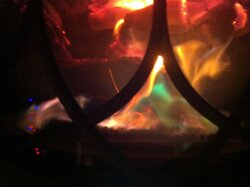I get the stove top temp up to about 500-550 when its cold out, then start backing it down and it will cruise in the mid 400s range for a few hours.
Firefighterjake I've been impressed myself and I'm not just a weekend burner.
I'll have the stove going 24/7 for several weeks on end all these years.
Firefighterjake I've been impressed myself and I'm not just a weekend burner.
I'll have the stove going 24/7 for several weeks on end all these years.


